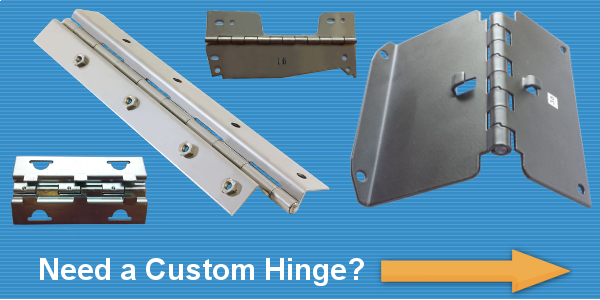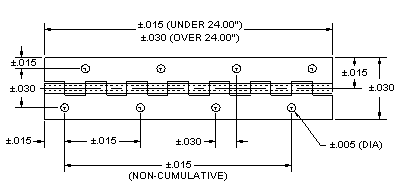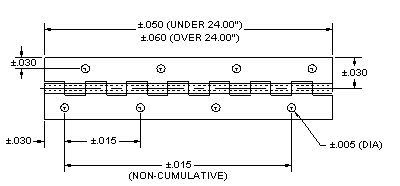Custom Hinges

Get a Quote Fast
If you already have a drawing or know what you need, you can complete the form to the right, upload the drawing, let us know how many you need and we will get back to you with a quote promptly.
Custom Hinge Selection Tool
If you are unsure of what you need, Guden has developed our Custom Hinge Selection Tool. This tool will guide you from the selection of the basic hinge through all of the secondary operations we offer. It is a great resource to make sure you have considered all options for custom hinges.
Hinge Drawing Templates Download
Guden also offers templates of basic hinges – some with different hole patterns – for you to download. This is an easy way to start designing a custom hinge.
Custom Hinge Design Considerations
Keep these factors in mind for optimal performance at an economical cost:-
Start with a standard product from our catalog. We
have over 600 in-stock items from which to choose.
-
For most items (up to .074 thick) it is most economical to
choose an even multiple of the knuckle length. For heavier items
that are hand blanked and curled, this is less important. We may
suggest a different knuckle length, number of knuckles or overall
hinge length if it turns out to be a cost effective change.
-
Partial end knuckles on lighter hinges (below .074") can
bind because they are deformed in the cut off operation, but this can also be used as
pin retention on the hinge.
-
Unequal leaves on lighter hinges are sometimes less expensive
when the total width is equal to a standard width. For example, leaves of .50" and
1.50" (2.00" total - a standard) are preferable to .50"
and .625" (1.125" total).
-
Use the same thickness hinge leaf as the door or base material.
Exceptions are recommended when the width of the door is more
than twice the height, or if a device mounted on the door doubles
the moment of the door.
-
A 2:1 ratio of pin diameter to leaf thickness usually provides
optimum strength. For example, a .120" diameter pin with
a .060" leaf.
-
Most stock hinges are supplied with the pins not staked in
place. Let us know if you require staking or another type of pin retention. (Those stock hinges
which are staked are so noted.)
-
Standard tolerances for hinges made with secondary finishing
operations are shown in the diagrams below. If you require tighter
tolerances for your application, we may be able to meet your requirements
with special fixtures or tooling.
Tolerances for .025 to .062 thick material

Tolerances for .074 and thicker material

Three Production Methods for Custom Hinges
| Method | A stock hinge |
Operations on a custom-run base hinge |
Manufacture |
|---|---|---|---|
| Quantity | low | medium | high |
| Tooling | no | no | may involve tooling costs |
| Lead Time | short | longer | longest on first order if tooling is involved, short on reorders |
Some Custom Hinge Design Considerations
-
Modify a stock hinge: cut down a standard length or width, punch holes
in choice of size, spacing and shape (e.g. round, square, rectangular,
obround - countersunk or plain). Additional operations are available, such as pin retention, bends, swages, PEMs and notches.
This is the best option for small quantities, rush delivery or experimental samples.
-
Secondary operations on a custom-run base hinge: run the base
hinge in a hand blank and curl operation (usually for heavier
gauges) or on a scrapless automatic line (for lighter gauges).
Finish with offset or swaged leaves, rounded corners, stamped
part numbers, PEM™ fasteners, springs, staked or spun pins, holes,
etc. This is the most common method for moderate quantities,
and generally takes longer than the first method.
- Full custom manufacture: scrapless automatic production with custom-made tools or laser cutting machinery. Eliminates the need for secondary operations. Longer lead time on first order. Quick production and lowest cost on reorders of large quantities. Note: This method may involve tooling costs.

